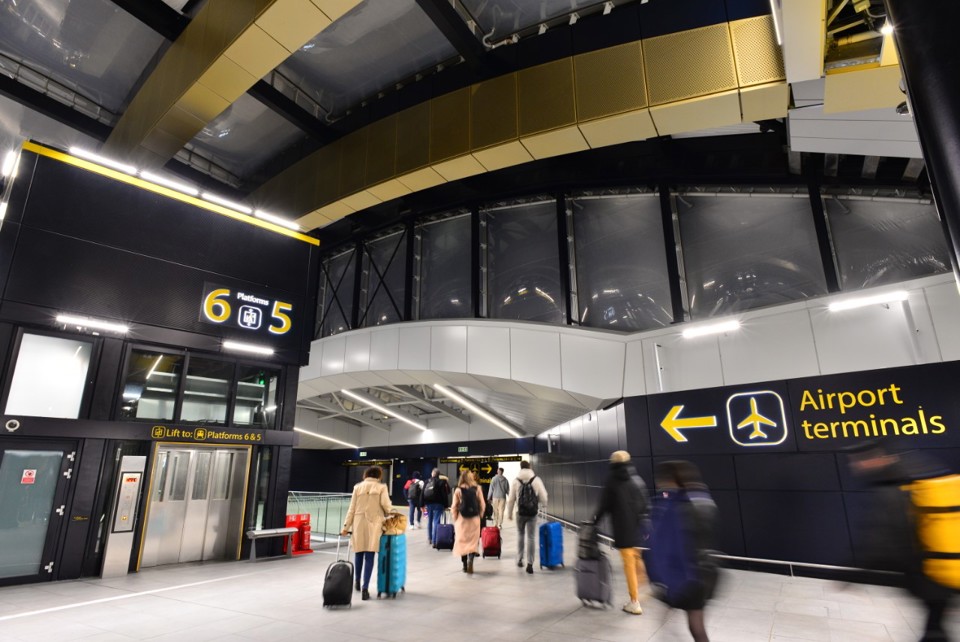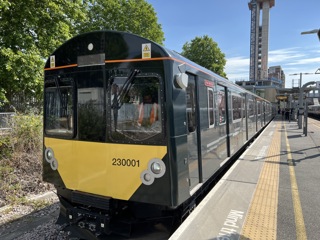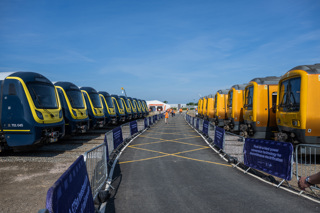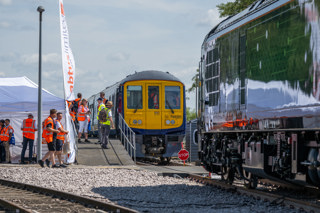Gatwick Airport has a great rail service. It’s been transformed by Thameslink’s expansion in the 2010s and now has a much wider range of direct trains.
Thameslink has certainly made it easier for me in York, with a pretty simple change in London between King’s Cross and St Pancras.
But changing trains to reach an airport is usually something that deters passengers.
This is apparent for Gatwick, where more passengers come from stations to its west (using direct Great Western Railway services that reverse at Redhill) than it does from Kent to the east (where passengers must change at Redhill).
Instead, airport users from Kent drive. A recent report from Network Rail’s Southern Region strategic planning team notes: “From a cross-regional connectivity perspective, getting between Gatwick and Kent is often easiest, quickest and often cheapest by car, not train.
“Not only do cars offer unparalleled convenience, security and comfort, they are also much quicker, and for infrequent trips with multiple passengers usually cheaper than by train.”
The team thinks that should change, and that the railway is missing an opportunity to serve a market that’s expanding once more and could be set to grow further.
Air travel arguably suffered more than rail in the COVID pandemic. Before then, the airport directly employed around 24,000 people, mostly on shift work.
Their commuting needs come on top of passenger flying. And those passengers should be back at pre-pandemic numbers by 2025-26, according to Network Rail.
Gatwick has applied for Department for Transport approval to bring its emergency second runway into regular use. The plan, as outlined in last year’s Development Consent Order application, would entail it being shifted 25 metres to the north, which would create sufficient separation to give the airport two workable runways.
The increase in flights that would follow will increase passenger numbers, putting pressure on roads and car parks.
Meanwhile, Gatwick has an ambition to see 50% of its staff and 60% of its passengers using public transport to reach it.
The airport used to have direct trains from Kent. But poor patronage resulted in trains from Maidstone ceasing in 2003 and from Tunbridge Wells in 2008.
Since their withdrawal, NR reckons that Gatwick passenger numbers grew by 56% to 2019.
In 2022, NR reports that 32 million people flew to and from the airport (still some way short of 2019’s 45 million) and 10,000 people commuted (this had been 20,000). The station sits in 22nd place in the Office of Rail and Road’s usage figures, with 16.5 million entries and exits in 2022-23.
Yet it’s not easy to add extra services, as that NR report acknowledges: “Introducing new services onto the Brighton Main Line (BML) between Redhill and Gatwick would absorb capacity and could impact service reliability on this busy and strategically important line.
“The BML carries a high volume of passengers and generates significant revenue for the network. As such, adding new services from areas such as Kent with lower passenger volumes and revenue generation potential means the impact of any new services on the BML must be demonstrably minimal from a capacity/performance impact perspective.”
Nevertheless, NR has put forward five options to increase Kent’s connectivity into Gatwick, with direct services rather than having passengers change at Redhill. All five would need subsidy or a substantial increase in traffic to cover their costs.
Working out which is best to take forward needs more work - not least because NR’s analysis used December 2019’s timetable as the basis for its comparison.
And just after completing this work, Southern implemented its December 2023 timetable, which cut the Tonbridge-Redhill line’s rolling stock allocation from three to two Class 377 electric multiple units (EMUs).
For NR’s analysis, the change instantly meant that its proposals become more expensive than current costs.
Its report admitted: “The December 2023 reduction in allocated rolling stock on the Redhill-Tonbridge line means there is reduced flexibility to extend trains to Gatwick as suggested in this analysis, particularly in the early morning and in the morning and evening peaks. Additionally, additional mileage and staff costs are subject to high uncertainty.”
It still suggests that around nine trains a day in each direction could be accommodated, but admits that this is not an immediate priority for the rail industry, before adding: “Reinstating the EMU allocation from two back to three units would also make the financial case for the services challenging.”
This shows rail’s unwelcome inflexibility. Contrast this with bus and coach companies, which can introduce services much more quickly - and also drop them if they don’t work just as quickly. Indeed, NR notes that Megabus dropped its twice-daily Canterbury-Gatwick service last summer after only a few months.
Although this might suggest the market is weak, NR argues that trains don’t get stuck in traffic congestion. But, of course, they don’t even get introduced if there’s no space in the timetable.
Sitting under all the options is the need to provide reliable services if rail is to become a trusted link between Kent and Gatwick. The railway must also be able to serve the airport’s peak hours, which vary considerably from those the railway was once used to.
The airport’s morning peak for departing flights is just before 0600 (with passengers needing to be there an hour or two before), and its arrivals peak is around 2200.
None of which makes decisions easy. Yet there’s support from local councils, and other stakeholders have been arguing for direct services ever since they stopped in the 2000s.
A full version of this feature complete with detail of the five options appears in issue 1007 of RAIL. Get your copy delivered to your letterbox or inbox.



















Login to comment
Comments
No comments have been made yet.